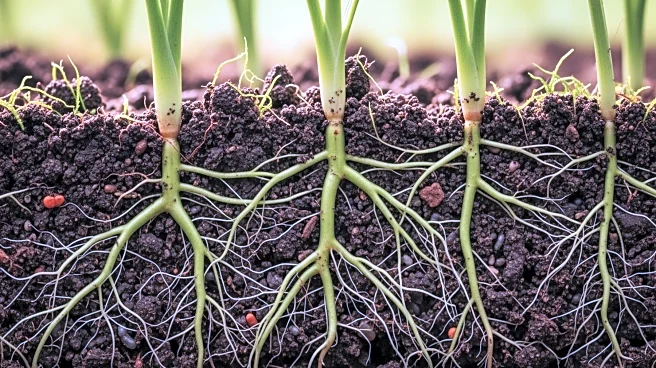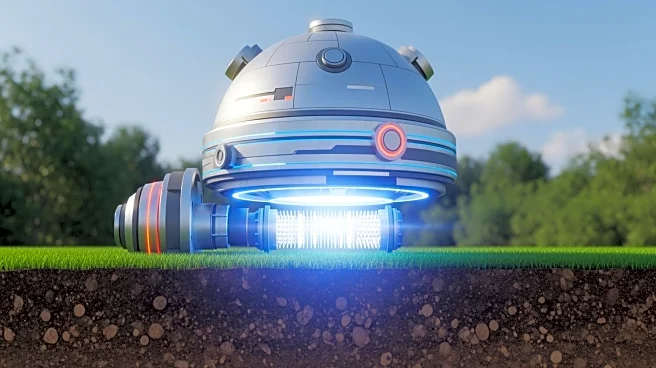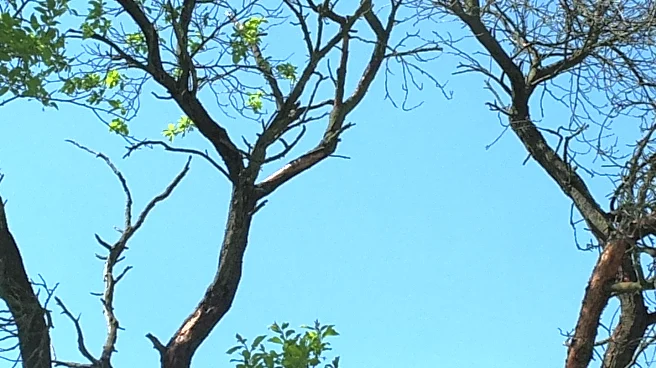What's Happening?
A team of scientists from the Chinese Academy of Sciences has introduced an innovative method to address soil pollution using microbial activity. This approach involves utilizing agricultural residues, such as rice straw, and controlling soil moisture
to enhance microbial processes. These microbes generate iron-rich minerals that absorb contaminants, which can then be safely collected or reused. This method offers a sustainable and cost-effective solution to restore contaminated farmland, wetlands, and industrial zones. The technique is adaptable to various soil types and pollution levels, making it a versatile tool in combating soil contamination.
Why It's Important?
Soil pollution is a significant global issue, with contaminants like heavy metals and microplastics posing threats to ecosystems and food safety. The development of this microbial method is crucial as it provides a low-cost, environmentally friendly alternative to traditional remediation techniques, which often involve heavy machinery and chemicals. By working with natural processes, this method could revolutionize land management practices, particularly in areas previously deemed too contaminated to recover. The potential to restore large tracts of agricultural and industrial land could have profound implications for food security and environmental health worldwide.
What's Next?
While the method is still under development for large-scale applications, its potential has garnered attention from experts in sustainable land management. Future steps may involve refining the technique for specific soil and pollution types and conducting pilot projects to demonstrate its effectiveness on a larger scale. If successful, this method could be adopted globally, influencing policies and practices in environmental remediation and land management.
Beyond the Headlines
This development highlights the growing trend of leveraging natural processes for environmental remediation. It raises ethical and cultural considerations about the balance between technological intervention and natural ecosystem functions. The method's success could prompt a shift towards more sustainable practices in various industries, emphasizing the importance of working with nature rather than against it.













